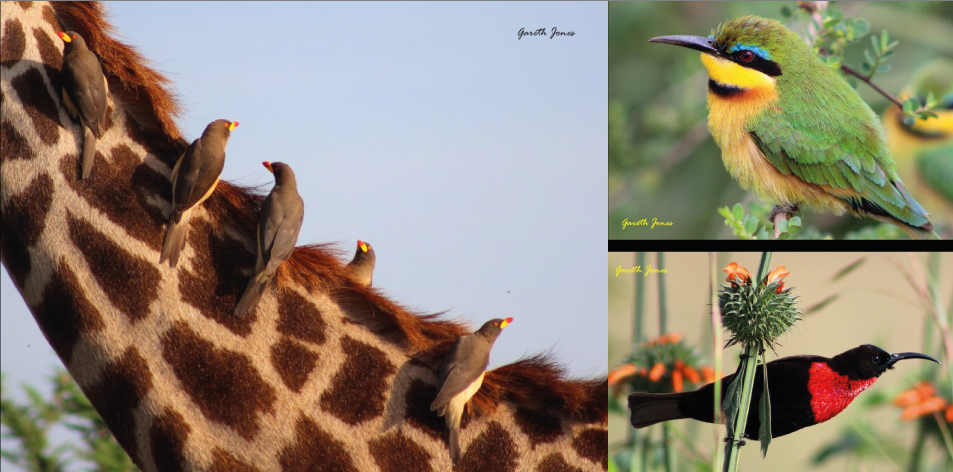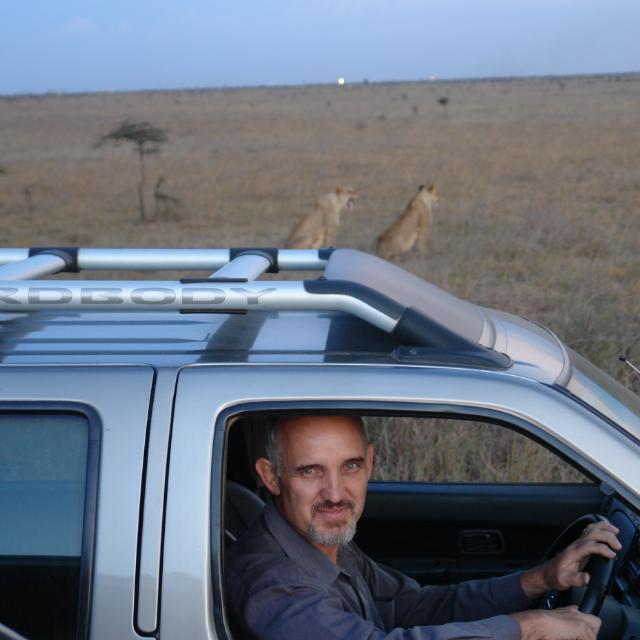
The Green Island – Article by Gareth Jones
NAIROBI NATIONAL PARK – THE GREEN ISLAND! – BY GARETH JONES
In the Athi basin many species are currently preparing to cross the Athi river to move out of the Nairobi Park. This seasonal movement out of the park usually happens during the wet season. For thousands of years large herds of wildlife, have migrated across the Athi-Kipiti Plains. In recent years the ancient migration routes have been severely throttled by the ever growing construction developments. As little as fifty years ago wildlife migrations were virtually unrestricted, but now in 2019 the situation has resulted in severe restriction of movements throttled by a maze of farm fences, land development activities and the ever growing greater Nairobi Mega City of well over 7 million people.
Older photographs indicate that as little as thirty years ago very large herds consisting of many thousands of the sub species of Eastern white bearded wildebeest (Connochaetes taurinus – albojubatus) & plains, zebra moved easily in and out of the area that is now called the Nairobi National Park. In recent years it has been noted that only a couple of hundred actually return to the Nairobi National Park. Over the years there have been many discussions over whether to completely fence the area or leave it open. Previous news of a number of lions being killed outside the park has prompted the Kenya Wildlife Service to state that the park will be eventually completely fenced on all sides. However this is not a simple solution, the conservancies and “sheep and goat” land adjacent to the park are vital buffer zones for wildlife movement. The ideal solution is to have a protected corridor that is monitored by wildlife organizations, effectively this translates to a park that is over 90% fenced with a narrow controlled migration route in the south. It is our hope and prayer that Kenyans and people who care about Kenya, will declare “enough is enough” and rise up to excellence by conserving and protecting one of Kenya’s priceless natural treasures, the Nairobi National Park.
In 1899 the railway line construction from Mombasa to Lake Victoria found a good midway watering point that soon became a busy village called Nairobi (from the Maasai phrase Enkare Nyirobi, which means “the place of cool waters”, amazingly this village quickly grew into a large town, to become the Capital City. Unique in the fact that there is no seaport or major river or mining industry around it.
As already mentioned, for thousands of years wildlife thrived on the Athi plains in great numbers and the seasonal migrations were magnificently beyond descriptive words, simply speaking this area was a wonderful paradise, created by God. For hundreds of years the African people had lived in relative harmony with nature.
Then ‘civilization arrived’, as trees were destroyed and wildlife killed, so the City grew. In 1946 the Nairobi National Park became the first national park in Kenya largely due to the actions of a bold man named Mervyn Cowie. At only 117 square kilometers it remains a small and yet vital ecosystem that constantly battles against a growing mega city.
Developing a strong economy requires a good effective and efficient transport network. The current reality includes plans to build another road on the Eastern boundary of the park from the Embakazi Container depot past the current east gate to join the southern bypass just past the Ole Serene hotel. In recent years, the southern bypass highway, electricity pylons, a fuel pipeline and a destructive railway line have all been constructed through this beautiful tiny national park. I pray that those in authority will listen to their conscience and consider the legacy they will leave for future generations. Development cannot take place at the expense of destroying or downgrading proclaimed priceless national parks and not considering wildlife seasonal movement outside National parks and reserves.
KWS continues to manage, however they need more help! God has put many wonderful treasures on this earth, and the Nairobi park is a priceless treasure that needs to be kept for future generations. So now the challenge for all concerned is to secure the conservation zone and ensure a corridor zone for safer seasonal movement of wildlife. Construction of a new southern bypass highway passing south of the Nairobi National Park is about to begin. The proposed Mombasa-Nairobi Expressway will bypass the capital city to branch off just past Konza, to route past Isinya and Ngong and then terminate onto the Nakuru highway in Kikuyu, design maps of the high-speed road have revealed. The Sh300 billion expressway to be built by American conglomerate Bechtel, is set to start any time after June 2019, according to project documents seen by the Business Daily. It will turn off before reaching Athi River, cut through Ongata Rongai and Ngong to join the Nairobi-Nakuru highway in Kikuyu town.
Without a migration corridor the Nairobi National Park will effectively just become “a green island in a sea of human development“. If this new southern bypass does not have any mechanism for wildlife to move underneath then the ancient migration route is to become a thing of the past. I strongly propose that the Conservation Alliance and other Wildlife Conservation organizations immediately check what provision has been made for seasonal wildlife movement?
If this current generation does not continue to act now, then the priceless Nairobi National Park will be reduced to a mere fraction of a “green island” in an ocean of development. In just over a century, Nairobi has grown rapidly into a huge mega city, and will possibly be home to over 12 million people by 2050. What is the meaning of priceless? Simply speaking a priceless treasure is a treasure that is so valuable and unique and precious that no money or any item of value can replace it. What if this was the year 2046 , the 100th year of the Nairobi National Park? Would it be a moment of great celebration, or merely a sober moment of reflecting on the sad lost past? This generation must choose, the actions of the present generation will decide on the future of the “green island “ we call Nairobi National
Park.
The park is open daily from 06h00 to 19h00.
Gallery
 Gareth Jones – Nairobi Park Dairy – A passionate writer & photographer
Gareth Jones – Nairobi Park Dairy – A passionate writer & photographer
